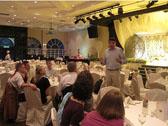By Caitlin Kasper – University of Minnesota, and Devin Burton – University of Wyoming
In Malaysia, our the first full day of touring was packed full of learning opportunities. We started by visiting the U.S. Grains Council office and met with David Cottrell and Raymond Hoh of the Foreign Agricultural Service and Adel Yusupov with the U.S. Grains Council. They briefed us on the agriculture industry in Malaysia and Southeast Asia. We learned that the Association of Southeast Asian Nations (ASEAN) has a wide variety of agricultural trade opportunities
throughout the world. Malaysia is prominent in the production of palm oil, rubber, rice and cocoa, while ASEAN’s future opportunities include population and economic growth, GDP and consumption growth, the demand for more meat products and the desire to be self-sufficient in animal agriculture. Demand for meat products in the region will increase as a result of growing population and urbanization as nearly 75 percent of the population in Malaysia is projected to be urban by the year 2050. Demand for healthy and lowfat products in Malaysia is also increasing. Our group also discussed DDGS and its use within Southeast Asia.
After learning about the broad agriculture industry in Malaysia we visited the Malaysian Palm Oil Board. Palm oil is the largest agriculture industry in Malaysia accounting for 60 percent of the total agriculture production. Twenty three percent of world fat and oil supply comes from palm oil, and Malaysia exports 90 percent of their production. From research, 12 new varieties of palm oil trees have been introduced and selected for different purposes. We had the opportunity to view and experience palm oil production from start to finish and the diverse number of products and by-products it produces.
Next, we toured a swine farm in Tanjung Sepat. The farm maintains about 700 sows and about 10,000 market hogs. Our group discussed the similarities and differences between a typical American swine farm and this Malaysian farm. This swine farm markets their hogs at 100 kilos, mix their own feed and use artificial insemination. Ten employees work on the farm to care for the hogs, and due to the hot weather in Malaysia, the hogs are always bathed at least once a day. An interesting fact we found out is that the stomach is the most expensive part of the hog.
We finished the day with a little recreation. We had a wonderful seafood dinner on the banks of a river and concluded with a firefly night cruise. These unique fireflies were no bigger than fruit flies and appeared to pulse like Christmas lights on one variety of tree that grew next to the river. Our group is looking forward to more learning opportunities and cultural experiences tomorrow.


